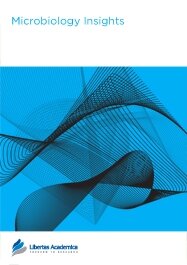

Publication Date: 22 Jul 2013
Type: Review
Journal: Microbiology Insights
Citation: Microbiology Insights 2013:6 59-69
doi: 10.4137/MBI.S10880

The genus Listeria consists of a closely related group of Gram-positive bacteria that commonly occur in the environment and demonstrate varied pathogenic potential. Of the 10 species identified to date, L. monocytogenes is a facultative intracellular pathogen of both humans and animals, L. ivanovii mainly infects ungulates (eg., sheep and cattle), while other species (L. innocua, L. seeligeri, L. welshimeri, L. grayi, L. marthii, L. rocourtiae, L. fleischmannii and L. weihenstephanensis) are essentially saprophytes. Within the species of L. monocytogenes, several serovars (e.g., 4b, 1/2a, 1/2b and 1/2c) are highly pathogenic and account for a majority of clinical isolations. Due to their close morphological, biological, biochemical and genetic similarities, laboratory identification of pathogenic and nonpathogenic Listeria organisms is technically challenging. With the development and application of various molecular approaches, accurate and rapid discrimination of pathogenic and nonpathogenic Listeria organisms, as well as pathogenic and nonpathogenic L. monocytogenes strains, has become possible.
PDF (800.46 KB PDF FORMAT)
RIS citation (ENDNOTE, REFERENCE MANAGER, PROCITE, REFWORKS)
BibTex citation (BIBDESK, LATEX)
XML
PMC HTML

We made our first submission to Microbiology Insights. We are very impressed by the helpful guidance during paper submission, the prompt processing (less than two weeks to editorial decision), and the flexibility of the editor-in-chief. We believe that Microbiology Insights journal is a unique platform that offer a high visibility for microbiologists, particularly in resource-poor settings.
Facebook Google+ Twitter
Pinterest Tumblr YouTube